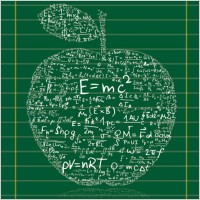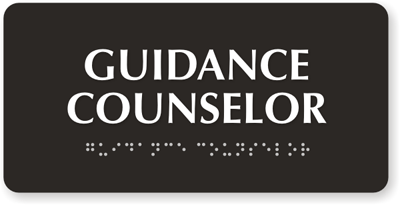
Are you interested in taking AP Physics? You might have noticed that the AP program offers more than one physics course. So what's the difference between the different AP Physics classes—AP Physics 1, AP Physics 2, and AP Physics C? We will introduce you to them and help you decide which one to take.
What AP Physics Classes Are Offered?
The AP Program used to offer three physics classes: AP Physics B, AP Physics C: Mechanics and AP Physics C: Electricity and Magnetism.
However, the AP program recently replaced AP Physics B, a one-year course, with two one-year courses: AP Physics 1 and AP Physics 2. These are both algebra-based physics courses, which means they don't require a math background beyond Algebra II.
The AP program still offers AP Physics C, which is broken into two courses and exams: Physics C: Mechanics and Physics C: Electricity and Magnetism. Many schools teach these as the same class, or just teach one topic. Both of these courses are calculus-based.
This means that there are now four AP Physics exams:
- AP Physics 1
- AP Physics 2
- AP Physics C: Electricity and Magnetism
- AP Physics C: Mechanics
The fact that there are now four AP Physics exams can be confusing. So do you take Physics 1, Physics 2, and Physics C in order? What's new about Physics 1 and Physics 2? We will introduce you to all of the courses and help you decide which class is right for you.
AP Physics 1
AP Physics 1 is an introductory, algebra-based, college-level physics course. It explores fundamental physics concepts like motion, force, Newtonian mechanics, gravity, energy, and momentum .

AP Physics 1 was designed to be a first-year physics course which you can take without prior physics experience. This is the main difference from the old AP Physics B course, which was designed to be a second-year physics class.
While there technically aren't prerequisites for AP Physics 1, the AP program recommends that students have at least taken geometry and are concurrently enrolled in Algebra II while taking this course. If you're not that far along in math yet, consider taking a different science class until you're caught up, as math is very important in physics.
AP Physics 2
AP Physics 2 is also an algebra-based, college-level physics course. However, it delves into some more advanced topics than Physics 1.
Physics 2 explores fluid statics and dynamics, thermodynamics with kinetic theory, PV diagrams and probability, electrostatics, electrical circuits with capacitors, magnetic fields, electromagnetism, physical and geometric optics, and quantum, atomic, and nuclear physics.
AP Physics 2 was designed to be a second-year physics course. This means it should come after AP Physics 1 or any first-year physics course. Much of its content is similar to the old AP Physics B course. This class will focus on more advanced physics skills and knowledge, including fluid dynamics, electric currents, magnetism, and quantum physics.
You can read the full descriptions of AP Physics 1 and Physics 2 at the College Board's AP website.
AP Physics C: Mechanics and AP Physics C: Electricity and Magnetism
Both AP Physics C courses are calculus-based, meaning you should have already taken calculus or concurrently be taking calculus while you take either AP Physics C course. This is the main factor that makes Physics C more challenging than Physics 1 and Physics 2.
Additionally, AP Physics C requires that students are enrolled or have already taken calculus.
But what's the difference between AP Physics C: Mechanics and AP Physics C: Electricity and Magnetism?
Mechanics covers kinematics, Newton's laws of motion, work, energy, power, linear momentum, circular motion and rotation, oscillations and gravitation. As you can see, these are many of the same concepts explored in Physics 1. However, this course goes into more depth than Physics 1 and uses calculus, making it much more challenging.
Electricity and Magnetism covers electrostatics, conductors, capacitors, dielectrics, electric circuits, magnetic fields, and electromagnetism. Notice there is some overlap with the Physics 2 curriculum, though again, Physics C will be more difficult since it incorporates calculus.

The two topics are sometimes taught as the same course even though there are two different exams, with each topic being taught over one semester. When taught as a single class, Mechanics is usually taught first, and Electricity and Magnetism comes second.
If schools only teach one topic, it tends to be Mechanics, since it builds on material most commonly taught in beginning physics classes (Newton's laws, work, energy, power, etc).
Each topic is supposed to be equivalent to one semester of college calculus-based physics. Because of this, AP Physics C is highly recommended to be at least a second-year physics course. So while you don't have to take Physics 1 or Physics 2 before you take Physics C, taking one (or both!) introductory physics courses is recommended.
You can read a full description of Physics C at the AP website.
Which AP Physics Class Should You Take?
Now that you know a little bit about the different AP Physics classes, you're probably wondering which class you should take. Or, if you want to take more than one, you're probably wondering the best order to take the classes in.
We will present a few possible sequences, but we will also give you some steps to follow up with your school so you can choose the class that's best for you!
Option 1: Regular/Honors Physics, Then AP Physics 2
If your school doesn't offer AP Physics 1 or you don't want the first physics class you take to be an AP class, then one option is to start with a regular or honors physics class, where you learn the basic concepts of physics. Then, you can take AP Physics 2 as your second physics class.
This option is ideal for students whose schools don't offer multiple AP Physics classes as well as students who don't have the time or desire to take multiple AP Physics classes. Physics 2 is the best AP Physics class to take after a regular or honors physics class (Physics 1 would pretty much just repeat what you already learned). AP Physics C is also an option if you're taking/have already taken calculus and have either Physics 1 or Physics 2 under your belt.
Option 2: AP Physics 1, Then AP Physics 2
The College Board says taking Physics 1 and 2 provide a solid physics background for future pre-med, geology, and life sciences students. They also say it's a good option for students attending colleges where they will have to fulfill a science requirement but will not be studying science as their major.
If your school teaches AP Physics 2 but not AP Physics 1, you can just replace AP Physics 1 with whatever introduction to physics course your school offers. Don't jump straight into AP Physics 2—it's meant to be a second-year physics course!
If your school teaches AP Physics 1 but not AP Physics 2, you could take Physics 1 and then take another natural science course (including chemistry and biology), a science elective. You could also consider taking AP Physics C if your school offers it.
Option 3: AP Physics 1, Then AP Physics C
AP recommends Physics C (along with AP Calculus AB or Calculus BC) for students aiming for engineering or physical science majors in college. However, taking AP Physics 1, Physics 2, and Physics C might be overkill—you would lose time taking other science courses, like biology and chemistry. Getting exposure to all three natural sciences is important for a well-rounded, challenging high school career, especially if you're going into science or engineering. You also want to make sure you can fit in at least one of the AP Calculus classes.
So if you want to take Physics C, start with AP Physics 1 (or a regular physics course), and then take AP Physics C, which will give you a total of two physics classes during high school.
Physics C is intended as at least a second-year course, so don't jump into it unprepared. Also make sure you have taken or are taking calculus while you take AP Physics C.
Next Steps
Now that you have a better idea of what the AP Physics classes cover and the general order they should be taken in, what should you do next? Read this section for the five steps you should follow.
#1: Get Expert Guidance
First, meet with your guidance counselor and find out which physics courses your school teaches.
Do they offer both AP Physics 1 and AP Physics 2, or do they just offer a basic introductory physics course? Do they teach AP Physics C? If so, do they teach Mechanics, Electricity and Magnetism, or both? Getting these answers is the first step to planning your schedule.
Also keep in mind that since Physics 1 and Physics 2 are new classes, schools might still be working them into their schedules over the next few years.

#2: Double-Check the Course Sequence
During the meeting with your advisor, ask about the recommended physics course sequence at your school.
There may be required prerequisite courses or placement tests for the AP Physics courses, or your school might have a recommended order of science classes that includes biology and chemistry.
#3: Research Your Teachers
Ask your counselor and ask other students who teaches the AP Physics courses at your school. You can ask other students currently taking AP Physics what they think of the teacher and how prepared they feel for the AP test. You can ask your counselor what the AP Physics test pass rate is like at your school.
Getting some background on how the classes are taught at your school can help you decide if AP Physics is right for you. As a brief example, at my high school, our AP Physics class included a lot of independent work and self-studying. It was great for students who were self-motivated, but challenging for students who wanted more support. Many students decided whether to take AP Physics based on whether they thought they could handle the independent nature of the class.
#4: Look at the Syllabi
If you're concerned about taking AP Physics, then looking at course syllabi can give you a sense of the courses' workloads and topics they cover. This might help you choose between taking a regular introduction to physics course or AP Physics 1, or choose between AP Physics 2 and AP Physics C.
#5: Check on Summer Homework
AP courses often have summer assignments. AP Physics C in particular is likely to have summer work, especially if your school teaches both topics. Make sure to consider your schedule and summer commitments (like camps, jobs or trips) before signing up.
Bottom Line
Aim to take AP Physics C if you are a future engineer or natural sciences major—but take it alongside or after taking calculus. If your school doesn't offer Physics C, take AP Physics 2 or honors physics if you can. Taking AP Physics 1 and Physics 2 is plenty if you aren't going to study natural sciences or engineering since you want to make room for other AP classes in your schedule.
If you're considering college engineering but aren't sure if it's right for you, taking AP Physics C could be a good way to find out if you are up to the challenge and enjoy the topics you would continue to explore in college.

What's Next?
Want to dip your toe into the physics pool to see if physics is the right AP science for you? We have straightforward articles on the law of conservation of mass, the specific heat of water, and the three formulas you need to calculate acceleration.
How many AP courses total should you take? What if you want to get into an Ivy League school? Read our advice on AP course load here.
Also studying for the SAT/ACT? Learn the difference between the two tests, including why one tests science and one doesn't. Also figure out which test you will do best on.
Curious about what it takes to get a perfect SAT score? Read advice from our full-scorer.
Have friends who also need help with test prep? Share this article!

Halle Edwards graduated from Stanford University with honors. In high school, she earned 99th percentile ACT scores as well as 99th percentile scores on SAT subject tests. She also took nine AP classes, earning a perfect score of 5 on seven AP tests. As a graduate of a large public high school who tackled the college admission process largely on her own, she is passionate about helping high school students from different backgrounds get the knowledge they need to be successful in the college admissions process.



































 Holly R.
Holly R.